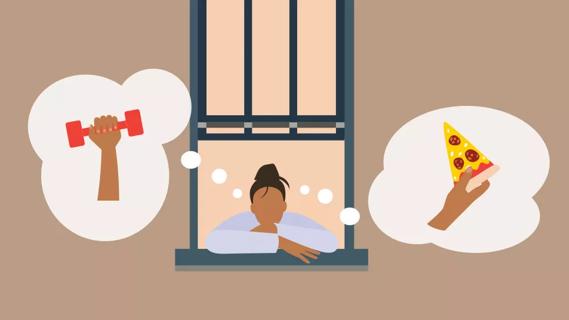It might be an eating disorder called ARFID

Do you find yourself scouring the juice aisle for pulp-free orange juice because the “pieces” drive your child crazy? Do they only eat “shiny” peas from the freezer because “dull” canned peas don’t taste right? Or maybe you’re racking up mileage on your car as you drive all over looking for a specific brand of yogurt?
Advertisement
Cleveland Clinic is a non-profit academic medical center. Advertising on our site helps support our mission. We do not endorse non-Cleveland Clinic products or services. Policy
You might think this is just super-powered picky eating, but it could be an eating disorder known as ARFID (avoidant/restrictive food intake disorder). Adolescent medicine expert Ellen Rome, MD, MPH, clarifies when picky eating goes too far.
“ARFID is an eating or feeding disturbance that includes food avoidance or a lack of interest in eating,” says Dr. Rome. “ARFID can mean an extreme form of picky eating that comes with nutritional deficiency, significant weight loss or, in children, failure to grow and gain weight.”
Nearly 5% of children have ARFID, and a higher percentage of boys experience it, as compared with anorexia nervosa and bulimia nervosa. It’s recognized more commonly in children and young teens than in older adolescents and adults. But it’s increasingly more common in adults thanks to diet trends that eliminate certain food groups from the diet (like gluten-free or vegan diets).
It’s important to note that ARFID is not associated with:
If your child has ARFID, their response to food is beyond their control. They may know that they need to eat better or gain weight. But they have a strong reaction to some foods, typically related to:
Advertisement
To tease out ARFID, an eating disorder specialist may ask the following questions:
“Once we diagnose ARFID, a team of highly trained professionals can help move the person and family towards recovery,” says Dr. Rome. “Recovery takes time; there is no speedy fix.”
In addition to a primary care provider, the treatment team may include:
At home, Dr. Rome suggests starting with foods you (or your child) enjoy and then slowly introducing new foods. “It can take 25 to 50 times before someone with ARFID no longer sees it as ‘new,’” she explains.
Another technique is “chaining,” which links foods someone will eat with foods they won’t. For example, if you love pancakes, try waffles. If you eat cheese pizza, add a little pepperoni. It works to switch back and forth between the accepted food and the new food to help with the transition.
“The process is slow and deliberate,” says Dr. Rome. “It can take up to a year to overcome ARFID completely. But within a month, we usually start to see some progress.”
Advertisement
Learn more about our editorial process.
Advertisement

With a focus on internal cues for hunger and fullness, this eating style may revolutionize your relationship with food

Review the ingredients, watch for sugar and fat, and choose one with the right amount of protein for your needs

Getting the hang of portions can help you better understand how much to put on your plate

A typical recommended balanced diet is half fruits and veggies, a quarter protein and a quarter grains

Foods high in protein, fiber and water can help keep hunger at bay

This quirky food trend is harmless, as long as you’re getting enough protein, fiber and healthy fats

Learning about your relationship with food can help improve your eating behaviors and patterns

Eating mindfully, sipping water and chewing slowly can help your brain catch up with your stomach

Start having sex about 72 hours before ovulation, then at least every other day during your fertile window

Attachment theory suggests that your earliest relationships shape connections throughout your life

It isn’t a recognized mental health disorder, but research shows that problematic social media use can negatively affect your mental health, self-esteem and sleep